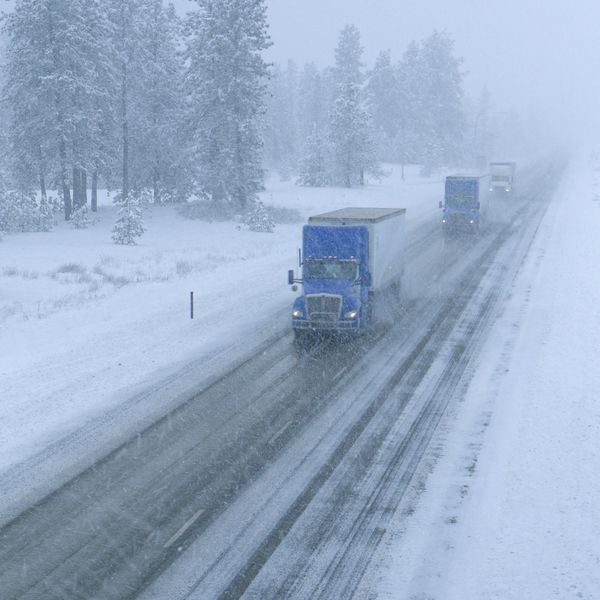Prepare Now For Severe Weather

Extreme weather conditions can create unexpected mechanical issues, safety concerns and possible delays, but proactive weatherproofing can help keep equipment running and protect drivers.
“Servicing and maintaining critical vehicle components ahead of severe weather can help prevent breakdowns, control costs and improve overall efficiency,” said Chris Hough, vice president of maintenance design and engineering at Penske Truck Leasing.
Electrical and Air System Checks
Electrical and air systems are the two areas most affected by cold temperatures. Proactive electrical system maintenance is critical to limiting electrical system issues. It is also essential to test batteries, replace them if needed, and clean battery terminals and cable connections. Any corrosion or buildup can inhibit electrical flow.
Batteries can fail under the high starting load they face in cold weather, so it is important to limit parasitic draw when trucks are parked. “Unplug driver convenience items such as coolers, TVs or other add-on items anytime a unit sits idle for a day or longer,” Hough said.
Air drier desiccant filters need to be changed regularly to maintain air system health. Hough also recommends drivers take time daily to ensure the vehicle's air system is water-free. Moisture in the tanks can freeze, affecting braking systems and other critical components.
Pre and Post-Trip Inspections
Drivers' pre and post-trip inspections are always necessary, and some items need extra attention in the winter. Hough recommends drivers inspect the wiper blades to ensure they are not torn or damaged, and double-check the windshield solvent level and top off if they are low.
Drivers should check to ensure all lighting is free of snow and ice buildup and clean as necessary, drain the air tanks often, and always ensure the truck's safety equipment is present. “Triangles and a fire extinguisher are two examples,” Hough said.
As vehicle safety technology evolves, there are more and more sensors on the vehicle, which can malfunction if blocked. “If the front radar sensor becomes covered with ice or snow, the driver may receive a system notification from the dash cluster that the ‘Radar sensor is blocked,’” Hough said.
To help prevent the issue, drivers can use a broom or small brush to dust off the ice or snow during pre-trip inspections. If drivers are already on the road, Hough recommends they find a safe place to pull off the road, inspect the radar then remove the ice or snow. “The windshield area in front of the camera must also be free of snow and ice,” he added.
Block Heaters
Plugging in block heaters when a unit is parked can help ensure vehicles start up again. Vehicles operating in cold regions are typically spec’d with a cold-weather package with pre-installed block heaters.
“Most of today's block heaters are thermostat-controlled and will only draw electric power when the coolant temperature drops below a preset set temperature,” Hough said. “The thermostatically controlled heater system decreases the energy required to maintain the correct coolant/oil temperature.”
Winterized Diesel Fuel
Diesel fuel can gel as temperatures drop, clogging a diesel fuel line and preventing trucks from starting. Penske pretreats fuel at most of its locations with additives that prevent gelling. Treatment typically begins on Nov. 1 and goes into March.
Plus, Penske’s fueling locations are full service, so drivers can remain in the cab, which can be an added convenience in cold weather. Penske's employees also walk around the tractor and trailer and check for maintenance issues, such as mud flaps, headlights or taillights that need repair.
If drivers cannot fuel at a Penske location and are in an area where ambient temperatures are expected to drop below the cold filter plugging point of the fuel, they can treat vehicle saddle tanks with one bottle per saddle tank of RED ALERT™. The driver should allow the vehicle to run long enough for the product to circulate through the fuel system before being shut down for the night. RED ALERT will also re-liquefy gelled fuel, if necessary.
Tire Conditions
Tire condition is also essential for performing in icy and snowy conditions. Tread depth should be a minimum of 5/32 inches for winter driving. Air contracts as temperatures drop, and cold weather can reduce tire pressure, decreasing traction. Tire pressures should be checked regularly and adjusted as needed.
Drivers should also ensure tire chains are in proper condition and they have working flares and triangles.
